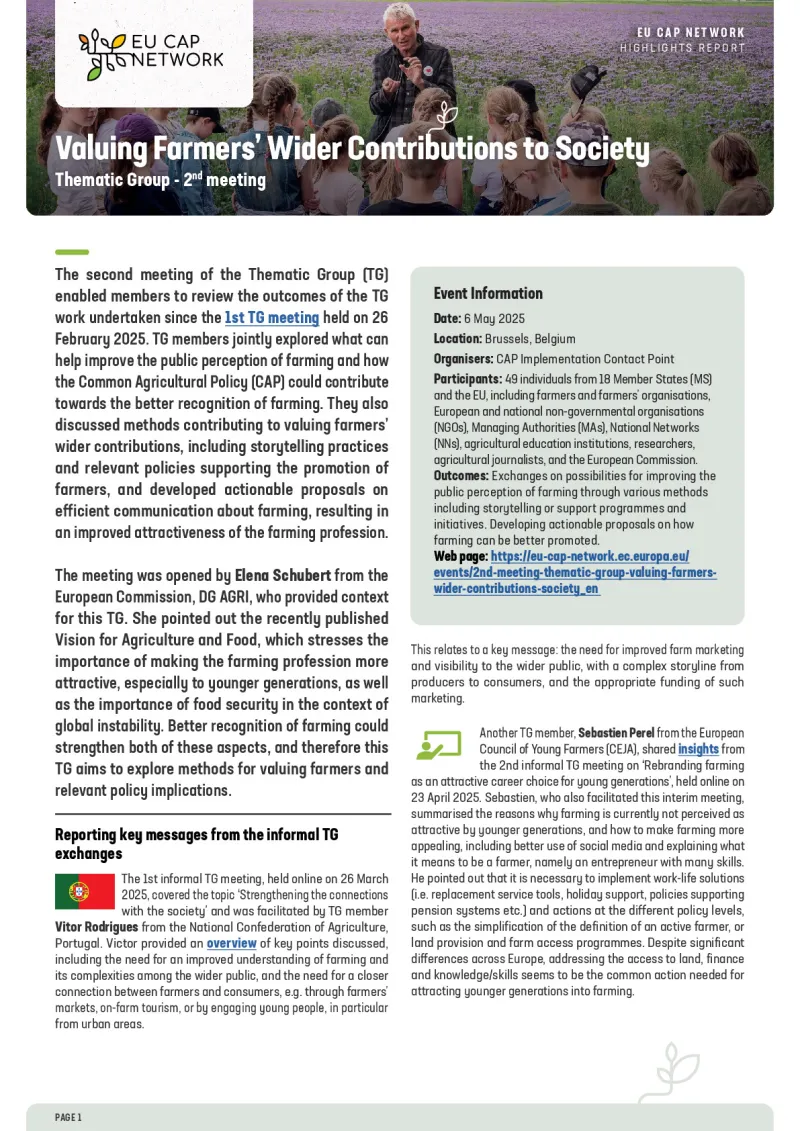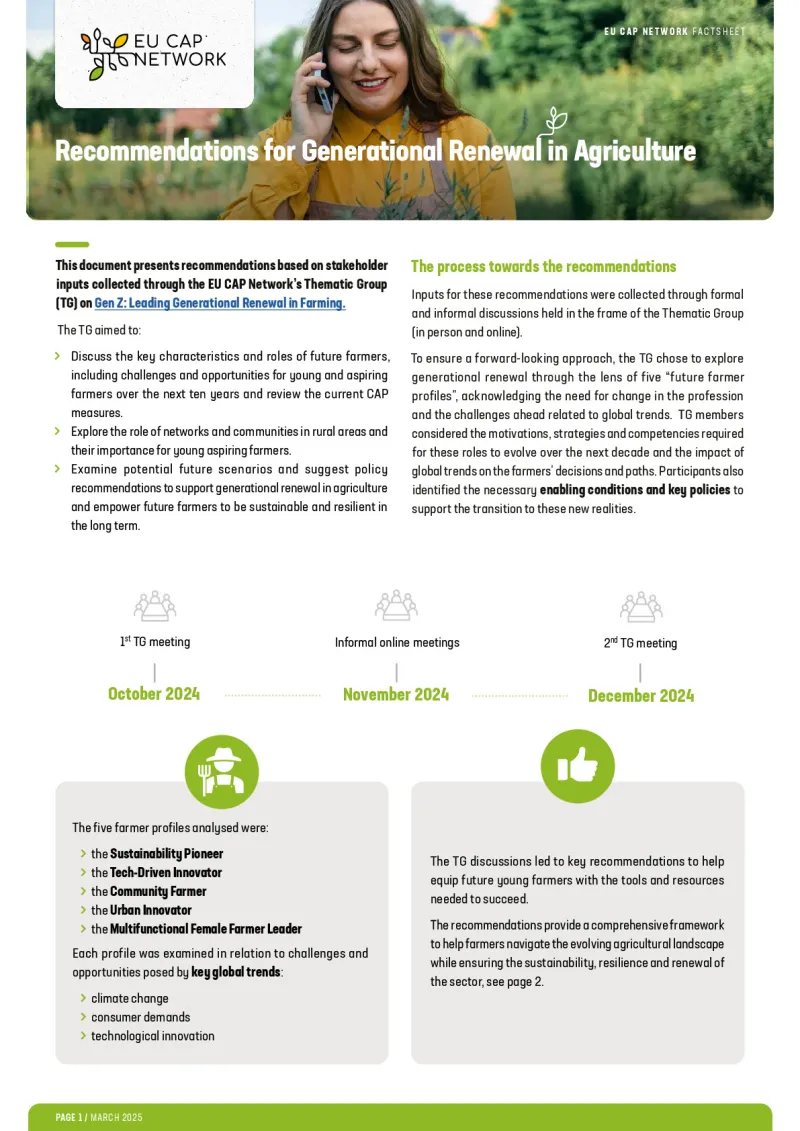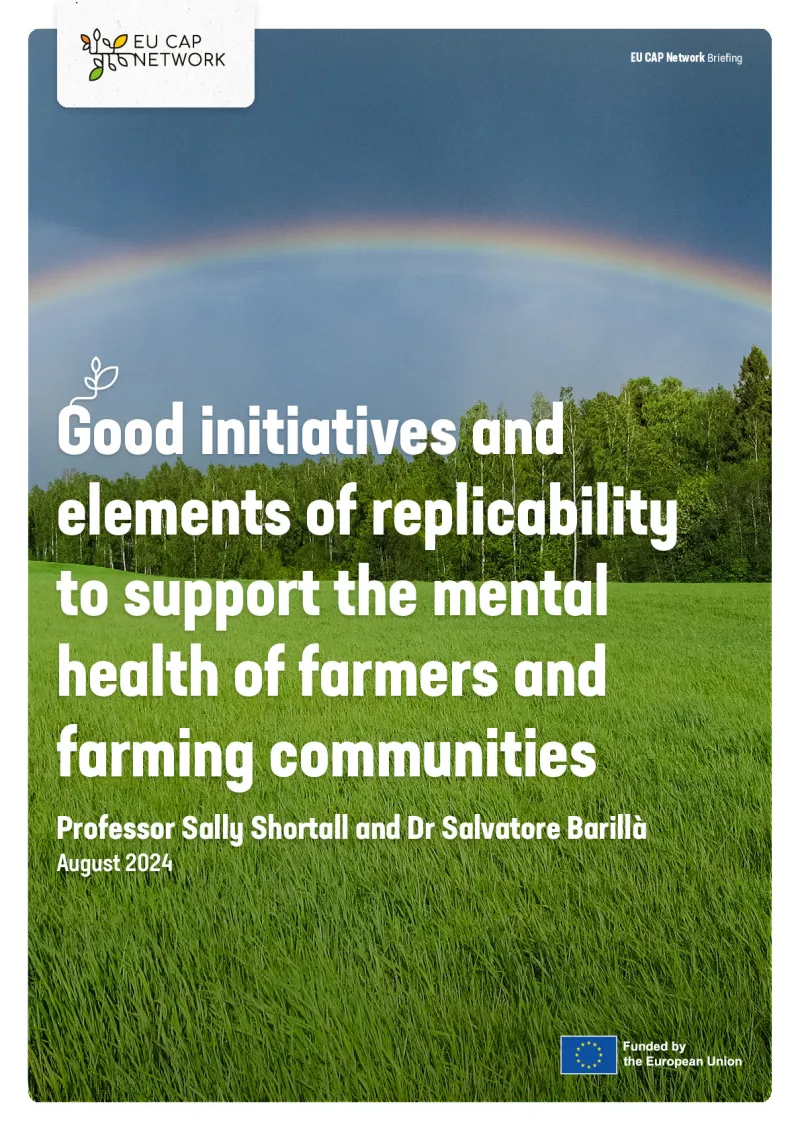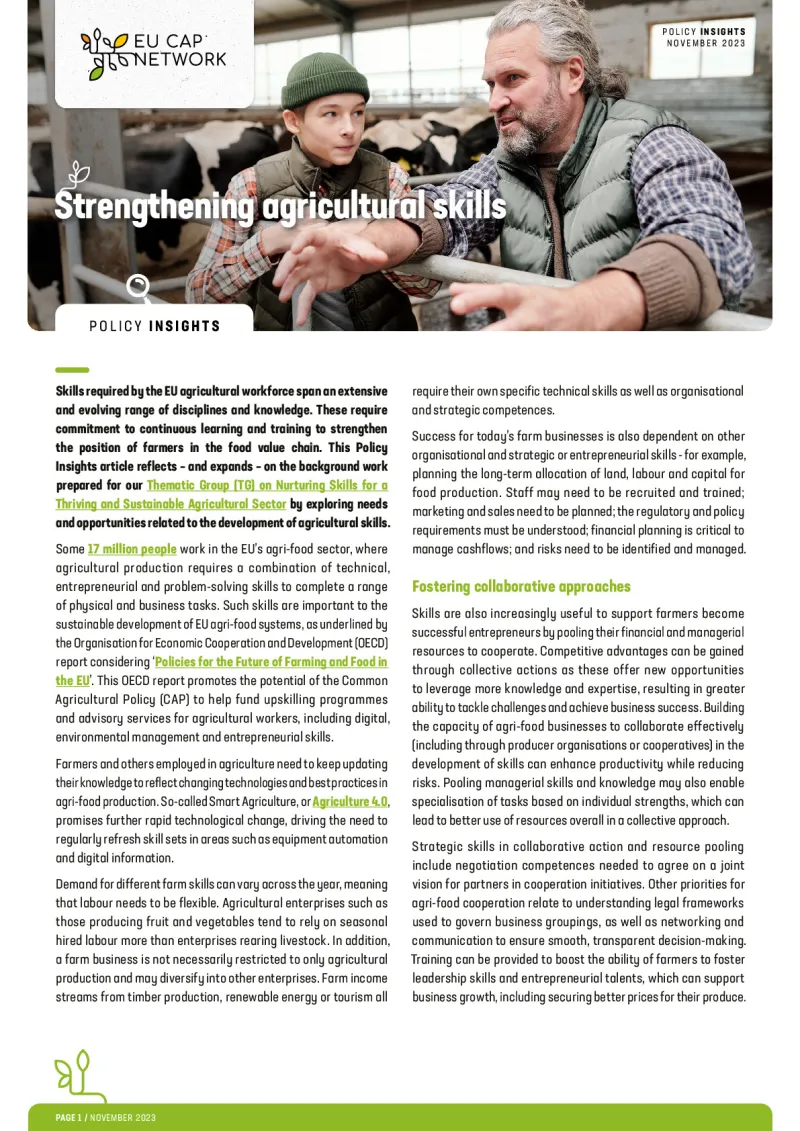Cultiver les liens : repenser l'agriculture pour refléter sa valeur sociétale plus large
Des « farmfluencers » qui utilisent les plateformes numériques aux initiatives locales qui mettent en relation les communautés et les consommateurs, nous explorons les efforts visant à mettre en avant le rôle essentiel des agriculteurs dans la construction d'un avenir durable.

Les agriculteurs ne sont pas seulement des producteurs alimentaires : ils sont le cœur battant des communautés, les gardiens de l'environnement et les innovateurs de la ruralité. Et pourtant, leur véritable impact est souvent négligé. Alors que le fossé entre les zones urbaines et rurales se creuse, il est plus important que jamais de raconter la véritable histoire de l'agriculture. Heureusement, des projets innovants montrent la voie. Des « farmfluencers » qui utilisent les plateformes numériques aux initiatives locales qui connectent les communautés et les consommateurs, cet article explore les efforts qui mettent en avant le rôle essentiel des agriculteurs dans la construction d'un avenir durable.
Le récent groupe thématique du Réseau européen de la PAC sur la valorisation de la contribution plus large des agriculteurs à la société a réfléchi à la valeur sociétale plus large produite par les agriculteurs. Pour compléter ce travail thématique, cet article explore des exemples innovants de moyens de sensibiliser le public aux multiples rôles des agriculteurs dans les communautés rurales.
L'essor des « farmfluencers »
Au cours des dernières années, une nouvelle vague de « farmfluencers » a émergé : des agriculteurs qui partagent leur quotidien, leurs succès et leurs difficultés en ligne, constituant l'un des outils les plus puissants pour redéfinir le discours sur les agriculteurs.
Qu'il s'agisse d'un producteur laitier sur YouTube qui parle du bien-être animal ou d'un jeune agriculteur sur « FarmTok » (le versant agricole de TikTok) qui s'efforce d'inspirer d'autres personnes à suivre ses traces, ces voix changent la façon dont le public perçoit l'agriculture.
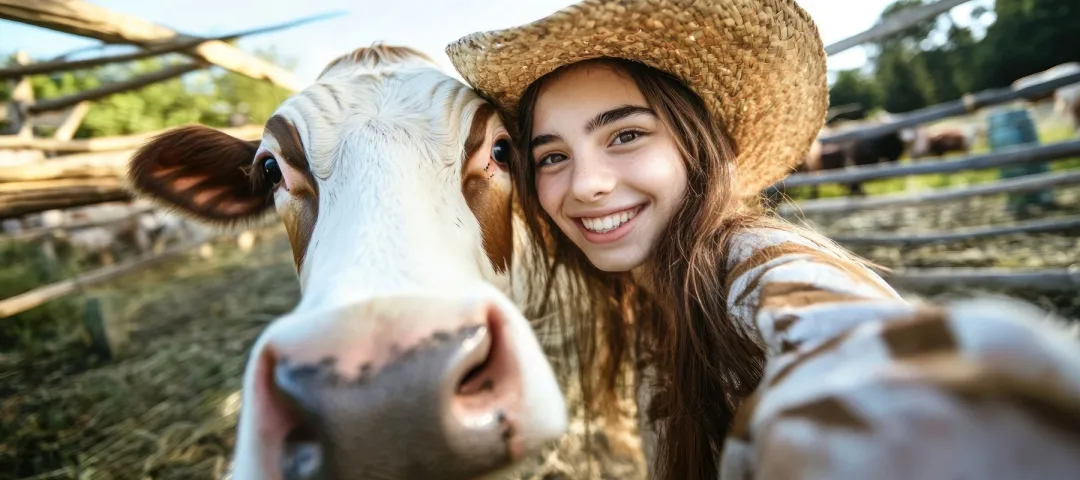
Cette évolution vers le récit numérique direct est cruciale. Elle donne un visage aux agriculteurs, instaure la confiance grâce à cette touche personnelle et touche de nouveaux publics, en particulier les jeunes, qui ont peu de liens directs avec la vie rurale.
En mêlant éducation et divertissement, cette ligne directe avec les agriculteurs offre un aperçu des coulisses de la vie agricole, leur permettant de façonner leur propre discours au-delà des stéréotypes dépassés.
Pour les agriculteurs qui souhaitent partager leur histoire sur les réseaux sociaux mais ne savent pas par où commencer, il existe de nombreuses ressources pour les aider à se lancer.
Par exemple, des projets tels que le Guide de communication des agriculteurs finlandais, élaboré par l'Union centrale des producteurs agricoles et des propriétaires forestiers finlandais, peuvent aider les agriculteurs à acquérir les compétences et la confiance nécessaires pour s'engager efficacement sur les réseaux sociaux, en veillant à ce que leur voix soit entendue dans un paysage numérique déjà très complexe.
D'autres ont contribué à créer une communauté autour du partage d'histoires en ligne, comme une équipe d'« Farmfluencers » autrichiens, soutenue par la Chambre d'agriculture autrichienne, qui aide à amplifier leurs messages, à sensibiliser le grand public et à apporter des changements positifs.

Grâce à des projets comme celui-ci et aux réseaux sociaux qui ouvrent une fenêtre sur la vie à la ferme, le mouvement des « farmfluencers » ne cesse de prendre de l'ampleur.
Plus récemment, il a également bénéficié d'un coup de pouce inattendu, avec un nombre croissant de célébrités qui investissent dans l'agriculture et défendent l'importance de cette activité dans nos sociétés.
Citons par exemple l'émission télévisée britannique à succès « Clarkson's Farm », qui suit le célèbre présentateur Jeremy Clarkson dans ses découvertes du métier, ou encore le musicien Andy Cato, qui s'est lancé dans l'agriculture et l'élevage en France et partage désormais son expérience en ligne.
L'union fait la force
Cependant, maintenir une présence en ligne nécessite un investissement en temps, en argent et en énergie, ainsi que la confiance en soi et la volonté de communiquer et de se promouvoir. Cela signifie que cela ne convient pas à tous les agriculteurs, ni n'est à la portée de tous.
C'est là qu'interviennent les campagnes numériques à plus grande échelle, menées par des institutions (ou des organisations) de soutien, qui aident les agriculteurs à promouvoir leur métier.
On peut citer par exemple l'initiative « There's More To The Story » (Il y a plus à dire) du réseau irlandais de la PAC. Cette campagne de huit semaines sur les réseaux sociaux, lancée en février 2025 et cofinancée par l'UE et le ministère irlandais de l'agriculture, visait à mettre en avant la contribution essentielle des agriculteurs irlandais à la restauration de l'environnement naturel grâce à divers programmes de la PAC.
Grâce à une combinaison d'images percutantes et de récits basés sur des données, cette initiative visait à lutter contre l'idée reçue selon laquelle les agriculteurs se concentrent uniquement sur la production. Elle met plutôt l'accent sur le rôle important qu'ils jouent dans la construction d'un avenir plus durable pour les paysages ruraux, en mettant en avant le travail environnemental souvent négligé des agriculteurs, tel que la restauration des habitats, la conservation de la biodiversité et l'amélioration de la santé des sols.
Cette campagne est un excellent exemple de la manière dont les efforts collectifs et les outils numériques peuvent contribuer à changer les perceptions et à garantir que les contributions plus larges des agriculteurs soient valorisées.
Le soutien aux agriculteurs qui partagent leurs expériences peut également prendre d'autres formes, comme les prix des influenceurs décernés par la Société allemande d'agriculture. Ouverts à tous les communicateurs agricoles ayant plus de 1 000 followers, ces prix contribuent à mettre en avant les influenceurs en ligne, à diffuser leur message et à soutenir leur travail en mettant les nominés en relation avec des contacts dans les médias et entre eux lors d'une cérémonie annuelle de remise des prix.
Sur le terrain
Si les plateformes numériques constituent de puissants outils de narration, il reste difficile de rivaliser avec l'impact d'une expérience pratique, en contact direct avec la terre et ceux qui la travaillent, comme le savent bien des programmes tels que la Journée « portes ouvertes à la ferme » en Estonie .
Lancée en 2015, cette manifestation annuelle, organisée par le ministère estonien des affaires régionales et de l'agriculture et le réseau estonien de la PAC, permet aux citadins de découvrir la vie rurale en les invitant à visiter des exploitations agricoles et des entreprises rurales dans tout le pays. Depuis 2015, elle connaît un succès croissant, avec plus de 350 exploitations participantes et plus de 300 000 visiteurs en 2024.
En offrant une expérience directe de l'agriculture, les journées portes ouvertes contribuent à démystifier les pratiques agricoles et à susciter une appréciation plus profonde de la production alimentaire.
Toutefois, l'impact de la journée « portes ouvertes à la ferme » va au-delà de l'éducation : elle favorise le tourisme rural, soutient les économies locales et renforce le lien entre les producteurs ruraux et les consommateurs urbains, mettant en valeur les précieuses contributions des communautés rurales à la société dans son ensemble.
Une autre initiative inspirante est le projet autrichien financé par la PAC « Afterwork à la ferme » (Afterwork am Bauernhof), qui propose des visites de fermes aux habitants des grandes villes. Il permet à 15-20 personnes de visiter deux fermes, d'échanger avec les agriculteurs, de déguster leurs produits et d'écouter leurs histoires. À l'heure actuelle, plus de 40 fermes participent à ce projet. Dans les environs de la capitale, Vienne, l'intérêt est grand et ce type d'événements est organisé toutes les deux semaines.
La PAC peut également contribuer à promouvoir l'éducation à la ferme et l'apprentissage entre pairs par le biais de fermes de démonstration. Par exemple, des subventions au titre du plan stratégique relevant de la PAC ont aidé à financer la ferme régénérative néerlandaise de Biestenhof afin de mettre en place un partage de connaissances et d'expériences sur place avec des agriculteurs, des conseillers agricoles et des étudiants sur leur modèle agricole.

Renforcer le rôle sociétal des agriculteurs
Parallèlement, d'autres programmes s'efforcent de renforcer le rôle sociétal de l'agriculture en associant des projets sociaux à des exploitations agricoles. Par exemple, un projet d'agriculture sociale en Irlande propose des visites thérapeutiques dans des fermes à des personnes handicapées, tandis qu'en Autriche, le Gartenhof Waiern est une ferme biologique qui emploie des personnes handicapées.
Des projets comme ceux-ci peuvent offrir des avantages réels et tangibles qui vont au-delà du simple tissage de liens sociaux. Par exemple, Nos Oignons, un projet mené en Wallonie (Belgique) qui favorise l'inclusion sociale dans les exploitations agricoles, s'est révélé être un moyen rentable de soutenir la communauté. Alors que les soins à domicile peuvent coûter jusqu'à 190 euros par jour et par patient, le coût de agriculture sociale est estimée à une fraction de cela, soit 80 euros par jour et par patient.
De cette manière, l'agriculture peut contribuer à remplir un rôle social essentiel. Les retombées sont multiples : création d'emplois pour la communauté, intérêt accru pour l'exploitation agricole et ses produits, mise en avant du rôle sociétal essentiel de l'agriculture et de sa contribution considérable à l'environnement et aux communautés locales.
Creuser plus en profondeur
Pour valoriser véritablement les agriculteurs, il faut reconnaître l'étendue de leur contribution, qui ne se limite pas à la production alimentaire, mais qui englobe également la préservation des écosystèmes, le renouveau des communautés et la promotion de l'innovation pour un avenir durable.
En trouvant des moyens innovants de partager des témoignages plus riches, plus diversifiés et plus percutants issus du terrain, la société peut cultiver des liens plus profonds avec les agriculteurs, contribuant ainsi à redéfinir l'agriculture d'une manière qui reflète la véritable valeur de leur rôle dans nos sociétés.
Le récent groupe thématique du Réseau européen de la PAC sur la valorisation de la contribution plus large des agriculteurs à la société a dressé une liste de bonnes pratiques issues de toute l'UE qui peuvent être une source d'inspiration supplémentaire. Cette liste sera bientôt disponible sur la page du groupe thématique, ainsi que d'autres ressources pertinentes.
